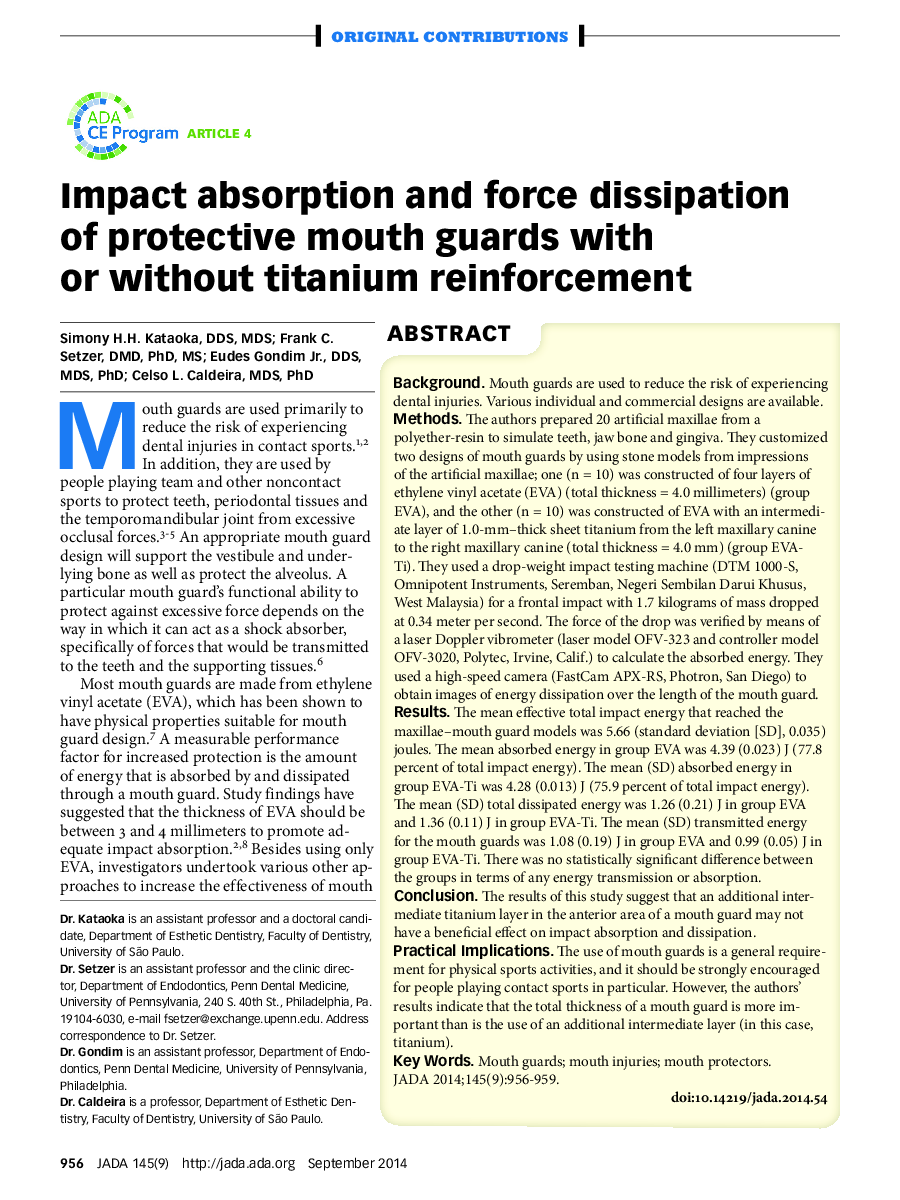| Article ID | Journal | Published Year | Pages | File Type |
|---|---|---|---|---|
| 3137184 | The Journal of the American Dental Association | 2014 | 4 Pages |
ABSTRACTBackgroundMouth guards are used to reduce the risk of experiencing dental injuries. Various individual and commercial designs are available.MethodsThe authors prepared 20 artificial maxillae from a polyether-resin to simulate teeth, jaw bone and gingiva. They customized two designs of mouth guards by using stone models from impressions of the artificial maxillae; one (n = 10) was constructed of four layers of ethylene vinyl acetate (EVA) (total thickness = 4.0 millimeters) (group EVA), and the other (n = 10) was constructed of EVA with an intermediate layer of 1.0-mm–thick sheet titanium from the left maxillary canine to the right maxillary canine (total thickness = 4.0 mm) (group EVA-Ti). They used a drop-weight impact testing machine (DTM 1000-S, Omnipotent Instruments, Seremban, Negeri Sembilan Darui Khusus, West Malaysia) for a frontal impact with 1.7 kilograms of mass dropped at 0.34 meter per second. The force of the drop was verified by means of a laser Doppler vibrometer (laser model OFV-323 and controller model OFV-3020, Polytec, Irvine, Calif.) to calculate the absorbed energy. They used a high-speed camera (FastCam APX-RS, Photron, San Diego) to obtain images of energy dissipation over the length of the mouth guard.ResultsThe mean effective total impact energy that reached the maxillae–mouth guard models was 5.66 (standard deviation [SD], 0.035) joules. The mean absorbed energy in group EVA was 4.39 (0.023) J (77.8 percent of total impact energy). The mean (SD) absorbed energy in group EVA-Ti was 4.28 (0.013) J (75.9 percent of total impact energy). The mean (SD) total dissipated energy was 1.26 (0.21) J in group EVA and 1.36 (0.11) J in group EVA-Ti. The mean (SD) transmitted energy for the mouth guards was 1.08 (0.19) J in group EVA and 0.99 (0.05) J in group EVA-Ti. There was no statistically significant difference between the groups in terms of any energy transmission or absorption.ConclusionThe results of this study suggest that an additional intermediate titanium layer in the anterior area of a mouth guard may not have a beneficial effect on impact absorption and dissipation.Practical ImplicationsThe use of mouth guards is a general requirement for physical sports activities, and it should be strongly encouraged for people playing contact sports in particular. However, the authors’ results indicate that the total thickness of a mouth guard is more important than is the use of an additional intermediate layer (in this case, titanium).
